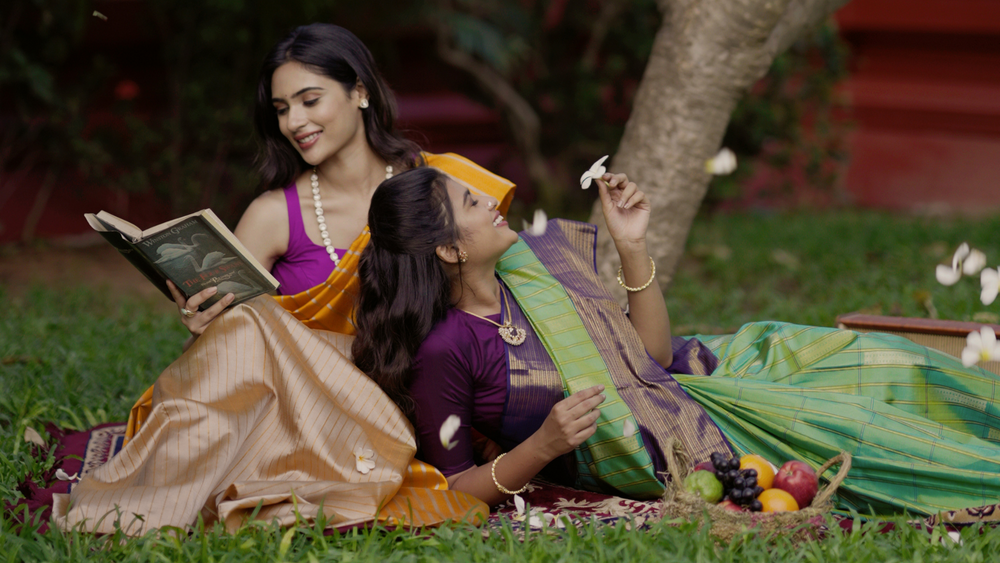How to Authentically Identify a Pure Kanjivaram Silk Sarees: A Comprehensive Guide by Pashudh
In the ever-expanding world of traditional Indian fashion, the Kanjivaram silk saree stands as an eternal symbol of grace, sophistication, and timeless elegance. As the demand for these magnificent sarees soars, so does the importance of understanding how to distinguish genuine Kanjivaram silk sarees from counterfeits. Pashudh, a trusted name in pure Kanjivaram silk sarees, brings you this comprehensive guide to ensure your investment is genuine.
Characteristics of Genuine Kanjivaram Silk Sarees
Soft, Smooth Fabric with a Slight Sheen: Authentic Kanjivaram silk is luxuriously soft and features a subtle sheen that reflects the high quality of the material.
Intricate, Elaborate Designs: Authentic pieces will feature intricate motifs, painstakingly crafted by skilled artisans.
Heavier Border and Pallu: A genuine Kanjivaram saree will have a heavier border and pallu compared to the body, often due to the gold or silver zari work.
Characteristic Zari: True Kanjivaram sarees feature high-quality "Zari" or gold threadwork, a signature trait that adds to their opulence.
Testing the Quality of Silk
Touch Test: Authentic silk feels soft and exhibits a uniform texture without any rough patches.
Strength Test: Genuine silk should be durable and not tear easily.
Decoding Zari or Gold Threadwork
Sheen and Quality: Authentic zari should radiate a rich sheen and not appear dull or faded.
Consistency: The zari should be evenly distributed across the saree without any gaps or loose threads.
Intricate Designs and Patterns Artistry: Genuine Kanjivaram sarees are celebrated for their complex designs, which should appear neither crude nor poorly crafted.
Color Vibrancy: Authentic pieces feature bright, enduring colors that resist fading.
Assessing Saree Weight
Zari's Contribution: Pure Kanjivaram silk sarees are naturally heavier due to the gold threadwork involved.
Weight Distribution: The saree's weight should be evenly balanced, without appearing lopsided.
The Five Authenticity Tests
Zari Test: Rub the zari gently; if it reveals red threads, it is pure gold zari. Otherwise, you'll see white threads.
Burn Test: Authentic silk, being protein-based, will emit a burnt hair odor when ignited, unlike artificial versions that smell of burnt plastic. Moreover, silk only burns when directly exposed to flame and stops upon removal. Genuine burnt silk yields powdery ash when crumbled, while counterfeits create a hard residue.
Touch Test: Authentic Kanjivaram silk feels soft and smooth, and should cause a noticeable change in your palm's temperature.
Lustre Test: Authentic Kanjivaram silk will gleam naturally when exposed to sunlight.
Ring Test: Genuine Kanjivaram silk, being smooth, should easily slide through a ring.
Hallmark Test: The most definitive test is looking for the Silk Mark Organisation of India’s hallmark, which certifies the saree’s purity.
Investment and Pricing:
Authentic Kanjivaram silk sarees, woven on handlooms, require days or sometimes months for completion. The inclusion of gold and silver zari further elevates its price. Half fine zari sarees, made using copper, are more cost-effective than pure zari ones. Genuine Kanjivaram Sarees, due to the top-tier silk and precious zari work, carry a hefty price tag. A price too economical may hint at its inauthenticity.
Conclusion
In a marketplace where counterfeits are rife, knowing how to authenticate a Kanjivaram silk saree is invaluable. Pashudh, as a reputable brand specializing in genuine Kanjivaram silk sarees, assures quality and authenticity in every fold and weave. Trust us for your investment in these timeless pieces, because every authentic Kanjivaram silk saree is not just a purchase but an heirloom.



Leave a comment